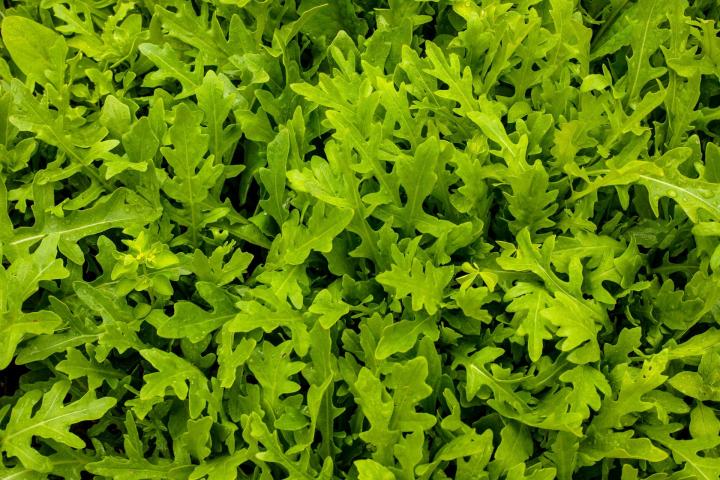
Also receive the Almanac Daily newsletter including gardening tips, weather, astronomical events, and more.
Planting, Growing, and Harvesting Arugula Lettuce
Cooking Notes
Packed with vitamins and minerals, arugula is often used fresh or in cooked dishes. Toss arugula into…
- Salads
- Soups
- Omelettes and eggs
- Sandwiches
- Grains
- Pizza toppings (Dress arugula lightly in a lemony vinaigrette.)

ADVERTISEMENT
I planted a packet of mesclun in a flower bed. The rabbits ate all of the lettuce but did not touch the arugula. It grew big and beautiful. I cut the tops and put them around the lilies and iris and hosta to stop the rabbits from eating them. It seems to have worked. I think I will plant arugula on purpose next summer.
I live in Billings, Montana and every year for the past 5 years, I have been unable to find Arugala seeds or plants.
Any suggestions for finding them here? If not, then I have to order online again.
I like that you included the names of some types of Arugala to get.
Thanks!
I believe these to be the best for mail ordering. Fedco
https://fedcoseeds.com/
Hi, I would like to plant in pots. How big a pot should I use? Can I put other items in the same pot? Thanks
Lettuce greens, which include arugula, are fairly shallow rooted; they do not need but a couple or few inches of depth. More is fine but not necessary. See here for examples: https://www.almanac.com/how-grow-your-own-salad-greens
So you can use any size container but if you are growing other things, you might want depth to satisfy their root needs. You can search for individual vegetables on this web site (go to the top of this page for the search box) and learn more about each one’s needs.
Responding to Mary's question about harvesting seeds. I just finished this about 2 minutes ago! When one of my arugula beds was determined to bolt, I let it. I let the seeds dry in the pods on the plant. Tonight I went and cut them off and captured the tiny seeds on white paper and saved in an envelope. I left out the ones that were still a little green for fear they might mold the dry ones. Waiting for slightly cooler weather to replant.
I would like to grow my Arugula again and have let some seed pods grow on a flowered plant. At present the seeds inside are green. What is the quickest way to dry them to brown so I can plant again this season? Or will I need to wait till next season?
Hi, Let’s say you pull your arugula out. What do you do with the soil afterwards? What is recommended to plant next?
It’s great to keep planting greens. They have quick harvests. This is called “succession planting.” You don’t want to plant ALL your seeds at the same time! You don’t need to do anything different. Plant every 10 to 14 days in between for an extended harvest. We would just fluff up (aerate) the soil a bit and replenish nutrients by forking in some compost and/or granular organic fertilizer.
Noted that you said they are edible, but should they be pinched off to help the arugula grow?










